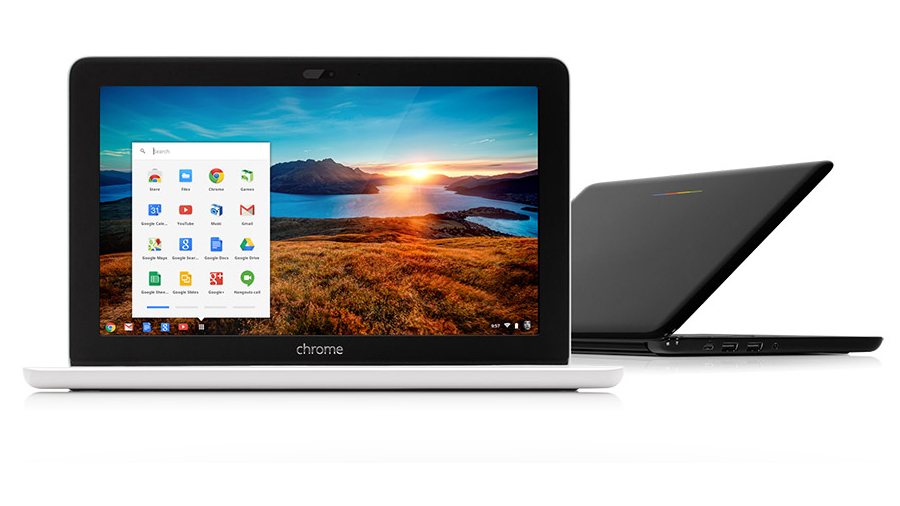Why you can trust TechRadar
The raw specs here are, naturally, unspectacular by the usual standards we apply to computers. 16GB storage courtesy of a built-in SSD (with no SD slot to expand it). A couple of USB 2.0 ports (and that's essentially it for ports). 2GB RAM. An ARM processor, which many would immediately dismiss as being not capable of any serious computing when compared to something from Intel or AMD. 1366x768 screen. 802.11a/b/g/n Wi-Fi (a 4G model is promised). Bluetooth 4.0. VGA webcam.
See? Nothing amazing. Nothing impressive. Nothing out of the ordinary. And yet of course the raw specs don't tell the full story, as you'll discover in the next section on the Chromebook 11's performance.
What's more, there are some specs here that are genuinely remarkable. Sure, 1,366x768 is not an unusual resolution for an 11-inch laptop – it's what the 11-inch MacBook Air has, for example – but here it's an IPS rather than a TN panel.
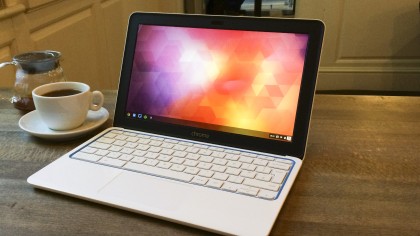
Gamers tend to prefer TN because it can be made to run at very high refresh rates, but often it's synonymous with cheap, low-contrast displays in entry-level hardware. IPS, on the other hand, is usually favoured by creative pros; although the refresh rate is usually lower – not that you'll really notice it unless you're pushing a computer for games – colours are deeper, and viewing angles much more generous.
HP claims 176° viewing angles, and while that's a little naive – there's a subtle light black overlay at much past 90°) it's nevertheless a screen that is, depending on your perspective, either good even when compared to stand-alone screens costing more than the Chromebook 11 itself, or downright astonishing at this price point. It's bright, too. Not bright enough, of course, that almost all contrast doesn't disappear in bright sunlight, but certainly bright enough that in most conditions it's comfortable to use with the backlight set somewhere between 40 and 70%.
The whole thing is light, too. At 1.04kg – and we bet some engineer is berating themselves that they couldn't shave 41 grams off it to bring it in under a kilo – everyone who picked it up remarked in surprise that it was lighter than they expected. (It's even lighter than an 11-inch MacBook Air, though there's only forty grams in it.) Chucked in a bag, you can barely notice it's there.
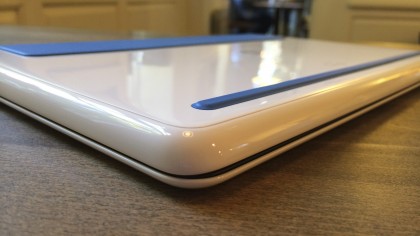
One other thing we really like is that its power connection is actually just a Micro-USB port, which means that pretty much wherever you go, it's likely that you'll be able to juice it up without worrying about proprietary connectors. It comes with a 15.75W mains charger, but you can just plug it into any old USB port; be warned, though, that most USB ports – even most USB chargers – won't supply enough power to charge it quickly.
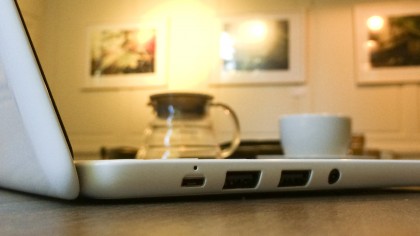
Indeed, when plugged into most things, you'll get a low power warning in Chrome OS, and the power level will actually drop (albeit slowly) if it's on, even if the screen is at its lowest brightness. So long as it's off or sleeping, the Chromebook will at least slowly charge when plugged into a PC or Mac USB port.
This Micro-USB port also acts, oddly enough, as the video-out port. It's the first Chromebook – indeed, the first laptop that we're aware of; we've seen it before in a handful of devices including the Google Nexus 4 and Nexus 7 – to feature this competitor to the Mobile High Definition Link (MHL) standard.
Although both standards seem the same – both pass video out over a Micro-USB connection – SlimPort is based on the DisplayPort standard which should mean greater flexibility in the future, though current implementations are comparatively limited. What's more, unlike MHL, SlimPort doesn't need external power.
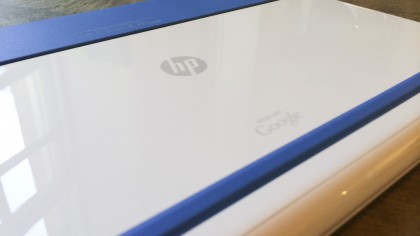
You will need to buy an adapter, though, converting the SlimPort connector to HDMI or VGA. They're not cheap – the Analogix SP1003 HDMI model we bought to test it with was £27 – but while we're not delighted to have to buy and carry around yet another unusual video adapter, it doesn't seem worth getting too worked up about SlimPort here given that we imagine a very small percentage of Chromebook users would regularly connect to an external display.
The last spec worth noting is the price. We'll talk about this more shortly, but let's acknowledge here that £229 is a small amount of money for a laptop, especially one that is as well-built and which, as we're about to see, performs as smoothly as this one.
